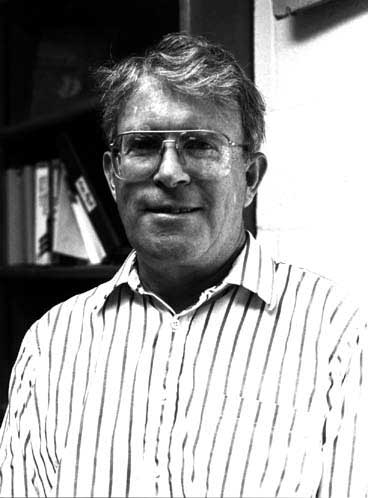|
Four years ago, Columbia University marine geologists William B.F. Ryan and Walter C. Pitman 3rd inspired a wave of archaeological and other scientific interest in the Black Sea region with geologic and climate evidence that a catastrophic flood 7,600 years ago destroyed an ancient civilization that played a pivotal role in the spread of early farming into Europe and much of Asia. The National Geographic Society offered astonishing evidence on Wednesday (9-13-00) to support Ryan's and Pitman's theory: the discovery of well-preserved artifacts of human habitation more than 300 feet below the Black Sea surface, 12 miles off the Turkish coast.
"This is stunning confirmation of our thesis," Dr. Ryan said. "This is amazing. It's going to rewrite the history of ancient civilizations because it shows unequivocally that the Black Sea flood took place and that the ancient shores of the Black Sea were occupied by humans." Inspiring a re-examination of the role of climate in human history, Drs. Ryan and Pitman's findings in 1996 suggested that the terrifying and swift flood may have cast such a long shadow on succeeding cultures that it inspired the biblical story of Noah's ark.
In an announcement dated Wednesday (9-13-00), the National Geographic Society reported that early in its five-week exploration it found a wooden structure and was now expanding its search into a river valley area where it is believed that more people lived.

|
|
William B.F. Ryan
|
"We've both been walking around on the ceiling," Dr. Pitman said of his and Dr. Ryan's reaction to the discovery.
The expedition leader, oceanographer Robert Ballard, who is best known for finding and exploring the wreck of the Titanic, said in a telephone call reported Wednesday from the expedition ship that researchers uncovered a structure "with carved wooden beams, wooden branches and stone tools collapsed among the mud matrix of the structure." A graduate student at Lamont-Doherty, Candace Major, is among the researchers on the expedition ship.
The site where the artifacts were discovered 311 feet (95 meters) below sea level would account for the extraordinary state of the preservation of the wood and other organic materials, said Dr. Pitman. He observed that the absence of oxygen in the Black Sea's deeper waters would prevent marine creatures from thriving and feeding on wood and other material. He also noted that the discovery of intact evidence of human habitation in so large an area, though improbable, had been helped because of the low sedimentation rate in the waters. "In other words, the remains were not masked by sedimentation," he said.
Drs. Ryan and Pitman argued their provocative theory in a 1999 book, "Noah's Flood: The New Scientific Discoveries About the Event That Changed History" (Simon & Schuster). Ryan and Pitman theorized that the sealed Bosporus strait, which acted as a dam between the Mediterranean and Black seas, broke open when climatic warming at the close of the last glacial period caused icecaps to melt, raising the global sea level. With more than 200 times the force of Niagara Falls, the thundering water flooded the Black Sea, then no more than a large lake, raising its surface up to six inches per day and swallowing 60,0000 square miles in less than a year. As the Mediterranean salt water replaced fresh water, it expelled a wave of human migration from what had been an oasis of fresh water within very arid lands.

|
|
Walter C. Pitman
|
The exodus was traumatic enough to be recorded in human memory as the epic of Gilgamesh and the biblical story of "Noah's Flood." Their theory was based on their discovery of a single, uniform layer of mud that strongly indicated a flood. Sediment core samples revealed sun-bleached freshwater mollusks, fossilized plant roots and cracks in the buried mud indicating that it had once been a dried out and windswept land surface.
When the expedition is over, the complete story of the discovery will be told in a one-hour National Geographic Special on PBS.
|
